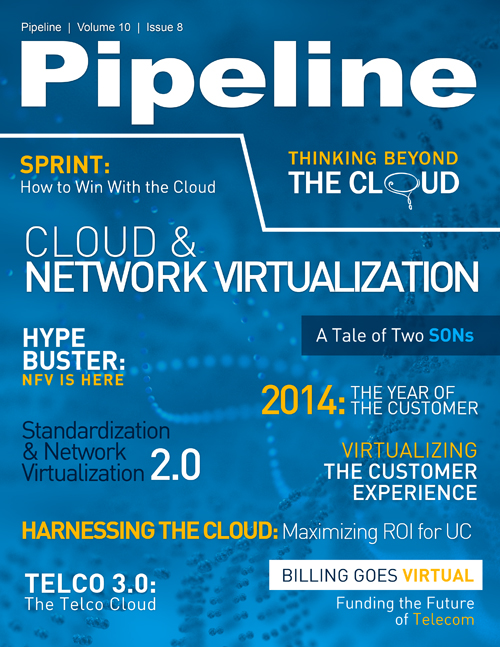Telco 3.0: The Telco Cloud
By: Becky Bracken

Bottom line: It's all about driving down the cost of transmitting a gigabit of data. Despite the cloud's borderless, unbreakable, limitless potential; the reality facing telcos is how to maintain a viable business under the crushing weight of exploding data demands.
Video, smartphones and connected everything, from baby monitors to service vehicles, is creating demand that was once unimaginable; but telcos have to scale accordingly. The telco cloud promises to drive down the cost of transmission, all while ensuring a higher quality of service, on demand, in real time.
Besides, imagine a telco freed from the constraints of hardware failures and network capacity limitations. It's easy to imagine because cloud computing, for personal and enterprise, is already in wide use. But a telco, with its stringent security and latency standards can hardly approach Amazon Web Services for a little extra room in their stack. The future of telecommunications lies in the clouds. The only question is this: Which path makes the most business sense in each use case?
Cloud is the 'only way forward'
Phil Twist, Head of Portfolio Marketing for Nokia Solutions and Networks (NSN), estimates the cost of traffic has to come down by nearly 100 percent in order for telcos to remain competitive in the next handful of years. The only means of squeezing that kind of efficiencies out of the network is the telco cloud.
“Cloud drives down the cost per gigabit,” Twist says. “The only way forward is to take advantage of cloud on mobile networks.”
Through cloud telco virtualization, service providers and operators have the opportunity to drive down cost, future-proof the network and create an environment conducive to creating and launching new services at the speed the marketplace continually demands.
Telco cloud defined
The National Institute of Standards and Technology (NIST) says there are 5 essential characteristics for a service to qualify as “cloud." First, the service must be on-demand and self-service, meaning the service control is initiated by the consumer. Second, control of the cloud service must be available over the internet or other networks using standard protocols. Third, resources, both physical and virtual, must be dynamically assigned and reassigned according to demand, in real-time. Fourth, the service must have automated, automatic provisioning and scalability to meet demand. And finally, the use by the customer must be monitored, controlled, reported, and charged with total transparency, which is another way to say the service must be able to meet "pay-as-you-consume" demands.
Similarly, there are specific ingredients of a first-rate telco cloud, according to Volker Held, Head of Industry Landscape at NSN. The Cloud Stack needs to be adjusted to the signaling and latency demands of the telco. In other words, the stack must be telco-grade. Second, a well-conceived telco cloud cannot be locked into a specific vendor for hardware, cloud stacks, or API, which provides far more flexibility to meet changing market demands for new and improved services. Third, he says, orchestration and application management are key for maintaining scalability and flexibility. Fourth, the cloud must be integrated into the FCAPS (Fault, Configuration, Accounting, Performance, Security) system for simplicity's sake. And finally, beyond the reinvention of the technological layer of the business, it must be accompanied by a business process overhaul.
Twist adds that NSN's Liquid Net is making progress and that they expect to be able to deliver a fully virtual core network sometime in 2014.
In November SK Telecom announced it deployed NSN's Liquid Core as a proof of concept ahead of
commercial availability, proving the promise of the future-proof telco cloud architecture.
“We have now verified the feasibility of telco cloud technology and can now make plans for our future commercial cloud solutions for enhanced flexibility and operational efficiency,” Choi Jin-sung, Executive Vice President and Head of ICT R&D Division at SK Telecom said.
The telco cloud is also the path to smarter networks that can respond in real-time to the needs of the user.
“You can buy the capacity you need in direct response to network,” Twist says. “You also create an unbreakable network, Self-organizing networks allow you to build and design a network so it responds directly to what your end user is trying to do.”



















